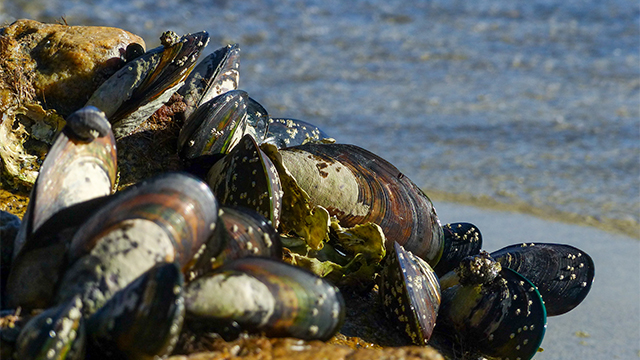
A team of researchers from Northwestern University has used a novel method to arrange molecules to create a glue that performs better than the adhesive they were trying to mimic – that used by mussels to adhere to rocks and other surfaces.
The researchers believe that the protein-like polymers and the process used to create them can be used as a platform to create new materials and therapeutics.
‘The polymer could be used as an adhesive in a biomedical context, which means now you could stick it to a specific tissue in the body and keep other molecules nearby in one place, which would be useful in wound healing or repair,’ said Nathan Gianneschi, the Jacob and Rosaline Cohn professor of chemistry in the Weinberg College of Arts and Sciences at Northwestern.
Proteins such as those secreted by mussel feet are produced by a range of other organisms. Consisting of long, linear chains of amino acids that repeat over and over (called tandem repeat proteins), they can appear stretchy, strong and sticky, showing up in insect wings and legs, spider silk and mussel feet. Although scientists know the exact primary sequences of amino acids that make up many of these proteins, they’ve struggled to replicate their creation while still maintaining their extraordinary qualities.
Rather than directly copying the structure of mussel proteins, Or Berger, a postdoctoral researcher in Gianneschi’s lab who studies peptides – short chains of amino acids – came up with an idea for how to arrange the amino acid building blocks differently. He took the building block of one of the proteins (the repeat decapeptide – a ten-amino acid sequence that makes up the mussel foot protein) and plugged it into a synthetic polymer. The result was something that looks like a brush of peptides rather than a straight-line amino acid chain.
‘Proteins arrange amino acids as chains, but instead we took them and arranged them in parallel, on a dense synthetic-polymer backbone,’ Gianneschi said. ‘This was the same thing we have begun to do for controlling specific biological interactions, so the same platform technology we will use for future therapeutics has really become potentially interesting in materials science.’
To test the new material’s efficacy, the researchers applied the polymer material and the native mussel protein to glass plates. After placing cells on the plates, they washed them and then assessed how many cells were present. They found that the PLP formed a ‘cellular superglue’, with more cells attached than the native mixture and untreated plates.
‘We actually didn’t mean to improve on the mussel’s properties – we only meant to mimic it,’ Berger said. ‘But when we went and tested it in several different assays, we actually got better properties than the native material in these settings.’
The team hopes that its model will be widely applicable across other proteins that repeat their sequence and has begun to consider applications for future materials.For example, resilin, a stretchy protein found in the legs and wings of insects, could be used to make flexible drones and other robotics.
‘When you talk about polymers, some people immediately think of plastic bags and bottles,’ said Gianneschi said. ‘Instead, these are very functional, advanced precision materials, made accessible.’
The team’s findings have been published in the Journal of the American Chemical Society.



